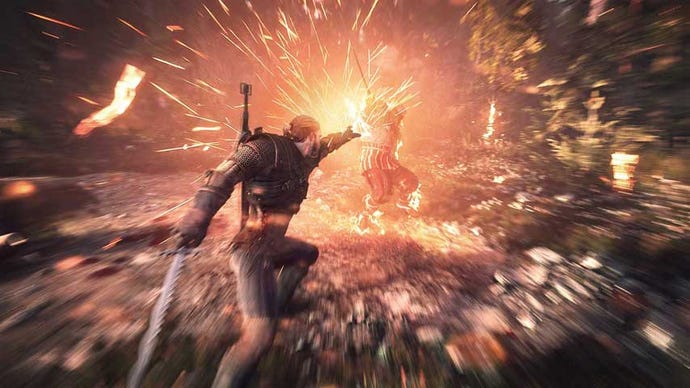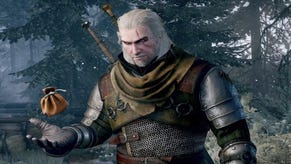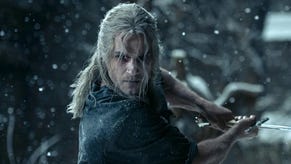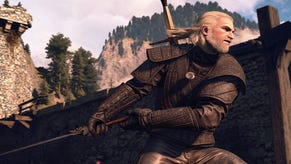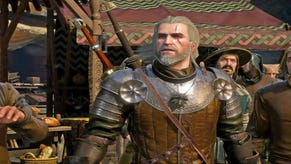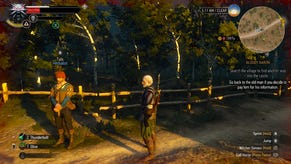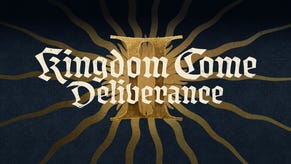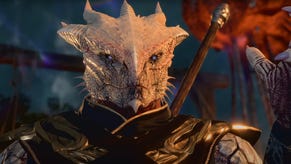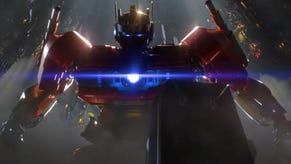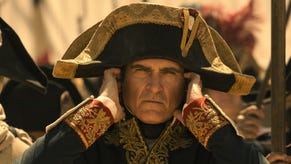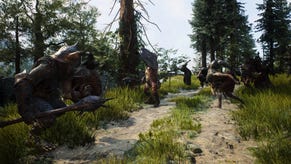Bringing The Witcher 3: Wild Hunt to life
In The Witcher 3: Wild Hunt, CD Projekt RED takes a whopping enormous map and fills it with stuff you actually want to see and do.
Do you remember back before Oblivion came out there was a lot of chat about how much more lifelike and realistic the NPCs would be? Rather than just hanging about town or falling asleep, they'd have jobs, gather to share meals, and otherwise behave just like little people.
Looking back on it, we all got a little excited about what turned out to be pretty wooden scripting. That's not to say Oblivion didn't make great strides, and Skyrim certainly improved on them, but there's not an open world game in existence where the NPCs are any more memorable than non-brand potato chips.
Cue The Witcher 3: Wild Hunt. Lights, camera - action.
One of the first notes I made during my play session with The Witcher 3 was "why are these people in the pub at dawn?" I felt really pleased by this observation until I remembered that beer was a common breakfast drink during the hundreds of years when groundwater was likely to have typhoid (or whatever) in it, and also the owner explained it was an inn, not just a bar; people stay overnight, and come in for meals.
I mentioned this personal journey from smug pedantry to humbled appreciator to CD Projekt RED.
"I put these people there," quest designer Philipp Weber told me, sounding quite pleased. "My main focus in the game right now is doing all the community stuff.
"So all the people that go there in the evening, go to their little huts and have lunch with the family, go to bed at night. If it's raining, they wanna go inside."
I had noticed this, out in the world - NPCs cuddled up by the fire or in their bedrolls at night. As in The Elder Scrolls, the characters act out their lives much as Bethesda's NPCs do, although I will say they do it with less awkward animations and sudden production of farm tools from thin air. They have multiple possible daily routines, for one thing.
"It can be very elaborate," Weber said. "For example in Skellige there's a family with a hunter. Usually in the day time he prepares the meat at home, or he goes into the forest and goes hunting. Some hunters may have a dog, which will help him, and attack the deer.
"He has a wife, who has another job. Maybe he has some children, but since the hunter and the wife both have jobs the children are left alone for the day, because there's no daycare in the world of The Witcher. So they may run around and throw stones at people."
(They also sing little songs, by the way. You may find this charming, but I'm one of nature's spinsters and tried to give them a clip round the ear after the third verse.)
"We really tried to have all the people in our game tell little stories, that don't even - they're not quests," Weber continued.
"You just watch it and you see it and it feels real."
You certainly can sit there and watch. Weber wasn't certain how long the day-night cycle is, but guessed it was something like one hour of game time per two minutes real time. That means it would take less than an hour for a whole 24 hour cycle to pass - similar to Skyrim in pacing.
The town I spent a day night cycle in was thrumming with life, in that there are enough people wandering around it that the streets and buildings don't look huge and empty and abandoned (although the realities of video game design does mean all homes are equipped with huge doorways and empty spaces, alas) as they often do in games. Nor are they filled with crowds of procedurally generated, constantly refreshed dolls.
The result of this balancing act is that NPCs feel much more essential to a location - less faceless and interchangeable. While still managing to get in the way of your galloping horse and complaining about your riding skills, naturally.
In addition to being repeatedly eaten by wolves, ghouls and men in their underpants (I don't know, I don't know) and playing CSI: Medieval (maybe the butler did it??) I totally ignored the main quest for the vast majority of my play time and spent it wandering around doing side quests.
I have to tell you though: they did not feel like time-wasting side quests. At the end of the prologue section I genuinely resolved to follow the main quest line, but I had barely stepped into the street when the early hub village of White Orchard smacked me over the head with its charms, and dragged me away to be its general dogsbody.
It wasn't just the icons on the mini-map which obviously needed seeing to; I perused a nearby notice board and came away convinced I could make a decent living answering this equivalent of classified ads - although some of them were not quest related at all.
"Some of the notices are just there for story. I love a notice that you can find in a little village - I don't wanna spoil too much, but it's about a dwarf offering his body to ladies," Weber said.
"Some of them will lead you to quests, or to hints. But others are just like a notice board would be. So like, this guy stole my hose, I hate him, he's an arsehole."
These took me all round the district, where I fell into new adventures (the afore-mentioned men in underpants) without triggering a painful glut of journal entries.
I also had adventures just trying to chat with people. "Do you sell better swords," is what I wanted to ask a dwarf, before going on the trail of an arsonist and probably ruining race relations in the town forever. "Which way to the barracks," I intended to ask a guard, but I'd forgotten to put my sword away, which he didn't like, and I felt a bit cheeky, which he really didn't like, and it all went terribly wrong.
In other tales of things going terribly wrong, I ran away from a pack of wolves and led them right into a village, where they started attacking the NPCS. I ran away again.
"In the big city, where there are people everywhere, you should never be able to get rid of them all - but they can be killed, yeah," Weber said of these unfortunates.
"If you lead a monster into a village the people will all try to run away, but the monster will get some of them, and they will die."
Just to reassure you, important quest givers can't die; they just fall unconscious and wake up later (another familiar RPG tactic).
"We want it to be real, but we don't want players to be able to ruin their whole experience," Weber said.
So, no: in all this drive for realism, CD Projekt Red hasn't forgotten that games are supposed to be fun. Case in point: if you want to spend an hour picking flowers, you won't have to sit through an animation each and every time.
"It was decided: nope," Weber said.
"Because if you really wanna craft, you will have to do that a lot, and- " (he sighed) "It will be annoying. If you kill an animal in the game, you just loot it."
It sounds like CD Projekt RED really respects your time, but I posit that they do not, because the amount of branching in this game is astounding. The outcome of a single choice lead to entirely different quests and consequences for the world - leading to thousands of possible world states.
"It's very hard, and we have multiple people who take care of that," Weber said. "So everything makes sense and interacts with each other."
CD Projekt RED has a series of flowcharts mapping out possible playthrough paths.
"If you have ever seen a diagram of a nuclear reactor, it looks like that," Weber said.
"I don't think there's any flow chart that shows every quest with every outcome because I don't think we could really display that."
This plethora of world states makes each play through really, uniquely yours - but even if you somehow managed to make all the same choices as somebody else - unlikely; there's no real "correct" choice in these games - the moment to moment of interacting with NPCs and monsters and weaving a path through the many optional activities means you'll always have different stories to tell of your time with Geralt of Rivia.
There are a lot of stories out there; there's the Witcher castle, White Orchard, Vizima, Novigrad, and Skellige to explore - and each of these hubs, if you want to call them that, is surrounded by huge expanses of land - forests, farmland, plains, battlefields, rivers, mountains and islands. All of them bursting with secrets to discover.
"If you were to ride on horseback at a gallop from south to north you would, I think, need 40 minutes," Weber said.
"Jesus," I said.
"Yeah," he said, sounding a little weary. "But you can fast travel once you discover a place once."
"And miss all the beautiful scenery? I will never fast travel," I immediately vowed. I thought about it a bit more. "I'll probably always fast travel."
Weber laughed.
More on The Witcher 3: Wild Hunt
